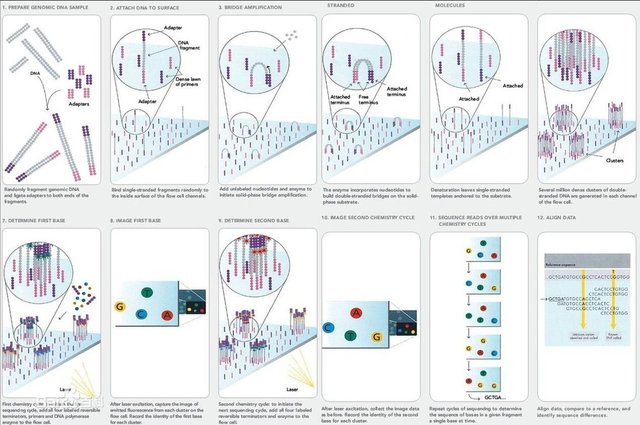PCR technology topic: nested PCR
Nested PCR
Nested PCR is a variant of polymerase chain reaction (PCR) that uses two pairs (rather than a pair) of PCR primers to amplify a complete fragment. The first pair of PCR primer amplified fragments are similar to normal PCR. The second pair of primers, called nested primers (because they are inside the first PCR amplified fragment), bind inside the first PCR product such that the second PCR amplified fragment is shorter than the first amplification.
experimental method
- Basic plan
| Principle of experimental method | Since the nested PCR reaction has two PCR amplifications, the possibility of amplifying multiple target sites is reduced (because there are few primers complementary to both sets of primers), which increases the sensitivity of detection; there are two pairs of PCRs. The pairing of the primers with the detection template increases the reliability of the detection. Since the second set of primers is located inside the first round of PCR products, the probability that the non-target fragment contains two sets of primer binding sites is extremely small, so the second set of primers is unlikely to amplify non-target fragments. This nested PCR amplification ensures that the second round of PCR product has little or no contamination by non-specific amplification due to weak primer pairing specificity.
Nested PCR reaction pattern |
|---|---|
| Experimental Materials | Gene sample |
| Reagents, kits | PCR buffer Tris·HCl KCl Taq polymerase |
| Instruments, consumables | PCR instrument |
| Experimental procedure | 1. Bind the first pair of primers of the target DNA template to blue. The first pair of primers may also bind to other fragments with similar binding sites and amplify a variety of products. However, only one product is the target fragment (there are many possible products shown in the figure). 2. Perform a second round of PCR amplification of the first round of PCR amplified products using a second set of primers marked in red in the figure. first round 1. Size: 1192 bp 2. Initial incubation: 94 ° C for 4 minutes 3. Denaturation: 94 ° C 45 seconds 4. Annealing: 58 degrees Celsius 45 seconds 5. Aggregation: 72 degrees Celsius 45 seconds 6. PCR cycle: 36 second round 1. Size: 271 bp 2. Initial incubation: 95 ° C for 2 minutes 3. Denaturation: 95 ° C 45 seconds 4. Annealing: 45 seconds at 60 ° C 5. Aggregation: 72 degrees Celsius for 30 seconds 6. PCR cycle: 36 |
| Precautions | 1. Primer design principle: each specific primer is 24~26 bases, Tm: 64-65%, GC: 44-55%. This way you can do multiple different TAIL PCRs simultaneously. 2. After the end of the first round of PCR, the PCR product is diluted 1 000 times (as appropriate) as a template for the second round of PCR, and the product of the second round of PCR is also diluted 1 000 times (as the case may be) as the first Three rounds of PCR templates, and so on. In practice, you can engage in 3 rounds or more. Of course, it is more appropriate to do 3 rounds. At this time, the PCR product is highly specific. |
| other | Graphic
|
Shanghai J.Shine Co.,Ltd , https://www.jshinechem.com

